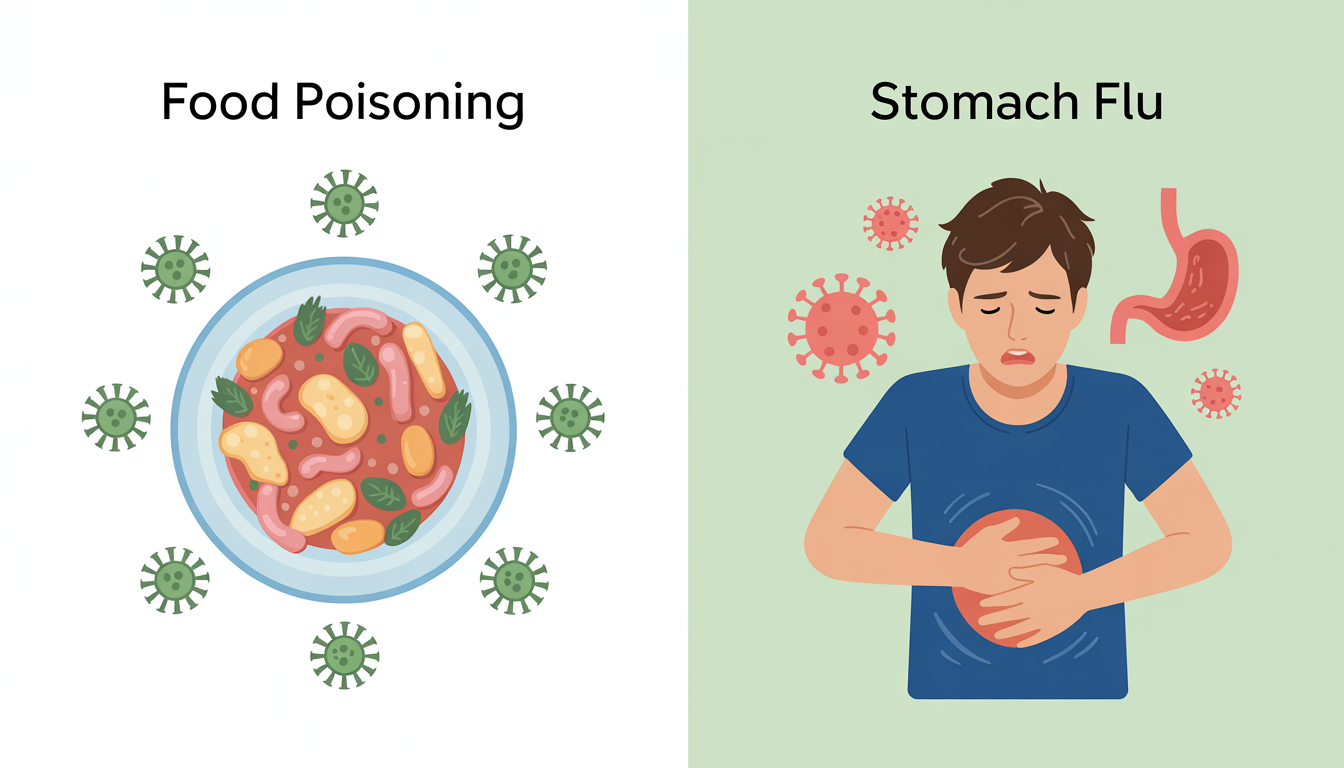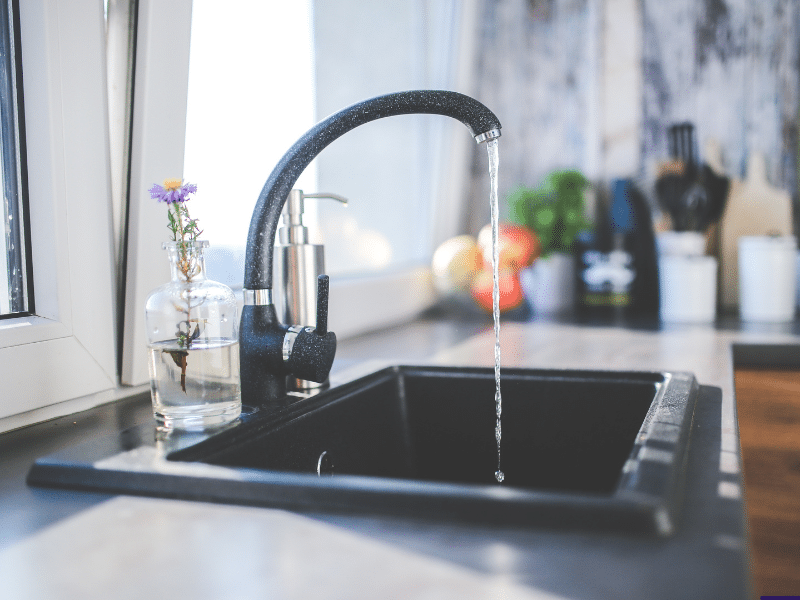What Makes Sushi a Risk for Food Poisoning?
The risk of food poisoning from sushi and sashimi stems from raw or undercooked fish and, occasionally, contaminated rice that has been left out. Most sushi rolls include some type of fish, such as salmon, tuna, yellowtail, or halibut. Unless the consumer requests the preparer to cook the fish to 145°F or higher, it isn’t exposed to the high temperatures that kill bacteria and parasites.
Some brands and sellers label their fish as sushi-grade, which generally means it is relatively safe to eat raw. However, the USDA and FDA don’t set official guidelines for designating fish as sushi-grade, so it’s important to understand the brand’s storage and handling processes.
To mitigate the risk of fish parasites and bacteria, quality sellers freeze fish at temperatures of -4°F or below. That seals in the fish’s flavor profile and nutrients and kills common fish parasites.
How Does Sushi Food Poisoning Happen?
Failure to follow safety protocols and otherwise mishandling food can introduce many bacteria and pathogens to food, especially higher risk foods like raw fish used in sushi. This section explores common factors in food poisoning cases:
Cross Contamination
Cross-contamination occurs when bacteria transfer from one food to another food. Mixing raw meats and produce or placing uncooked foods on contaminated surfaces like countertops and cutting boards may result in cross-contamination. To reduce risk, clean surfaces with hot, soapy water and use separate utensils to slice raw meat and produce.
Poor Hygiene Practices
Germs can lurk anywhere—on countertops, utensils, food, and hands. To protect against germs that cause food poisoning, use proper hygiene. Wash hands before handling food and during preparation, and only use clean utensils. Sick people should avoid preparing food for others until they overcome their illness.
Improper Storage
The FDA’s storage guidelines encourage consumers to refrigerate seafood at temperatures under 40°F if they intend to eat it within two days. Otherwise, keep it frozen. Again, if the seafood will be eaten raw, such as in sushi, the seller should freeze it at temperatures below -4°F for at least seven days to kill existing parasites. However, freezing fish does not destroy all germs, so it’s still possible to get sick even when following proper storage handling procedures.
Real Cases of Food Poisoning from Sushi and Sashimi
Unfortunately, food poisoning from sushi is more common than you may think. There are multiple examples of people harmed by eating sushi, resulting in severe sickness and even death.
- Bozeman, Montana – Two people died, and multiple others experienced severe illness after eating sushi rolls containing morel mushrooms in April 2023. One of the deceased victims suffered cardiac arrest the day after her meal. She was transferred to the hospital and subsequently suffered organ failure before dying.
- Raleigh, North Carolina – Hundreds of people suffered severe food poisoning after eating at Sushi Nine, a popular restaurant located near North Carolina State University. Investigators believe the source of the poisoning was due to either improper food storage and preparation or norovirus. The restaurant ultimately shut down for several days of deep cleaning and inspections before reopening to the public.
- Long Island, New York – Dozens of customers experienced severe food poisoning after dining at Kumo Sushi and Steakhouse. A bacteria known as Bacillus cereus appeared to be the source of the poisoning and spread due to improper storage and handling procedures.
Illnesses and Bacteria from Eating Contaminated Sushi
Various parasites and bacteria can cause food poisoning from sushi.This section explores some of the most common.
Vibrio
Vibrio is a bacteria often found in coastal waters, including rivers, lakes, and oceans. Vibrio is commonly found in seafood, including oysters, clams, fish, mussels, and crabs. Once present, it can transfer to other foods or surfaces.
Vibrio bacteria are most commonly found in raw oysters. However, it’s possible to ingest the bacteria in fish used in sushi. Individuals with certain medical conditions, such as liver disease, diabetes, or cancer, are at higher risk of severe sickness or death from a Vibrio infection.
Listeria
Listeria grows in water, soil, and some vegetation. Once a food becomes contaminated with Listeria, the bacteria can continue to spread, even if refrigerated. Listeria can grow in many foods, including vegetables, raw meats, and unpasteurized dairy products. As sushi can sometimes contain food types that themselves can proliferate bacteria, like cream cheese, food safety practices for those foods need to also be followed.
The best way to rid food of Listeria is through pasteurization and cooking. Since some sushi rolls are eaten raw, contaminated fish or vegetables used in the roll may contain Listeria, resulting in food poisoning.
Salmonella
Salmonella is one of the most common causes of food poisoning. It’s typically found in the intestines of birds, reptiles, and mammals. People can develop salmonellosis from eating contaminated food products, such as raw meats or unpasteurized milk.
Cross-contamination and improper food preparation can lead to salmonella poisoning. Eating raw sushi may increase the risk of illness since it’s uncooked.
Anisakiasis
Anisakis is a parasite found in many types of fish, including Pacific salmon, herring, flounder, and monkfish. People may develop anisakiasis after eating contaminated fish in raw or undercooked sushi. An infection occurs when the parasite invades the gastrointestinal tract, eventually causing a mass in the stomach, intestine, or throat.
Proper freezing of seafood intended for raw consumption can kill the parasite. The CDC recommends freezing seafood at temperatures below -4°F for seven days, or at -31°F until solid, and storing at -31°F for 15 hours or at -4°F for 24 hours or longer.
Tapeworms
Parasitic tapeworms exist in freshwater and anadromous fish, such as salmon. While cooking infected fish to at least 145°F will kill tapeworms, many people consume raw sushi rolls, increasing the risk of a tapeworm infection.
As with other parasites, sushi and sashimi preparers can protect consumers by following proper storage procedures. Freezing fish to appropriate temperatures can reduce the risk of tapeworm infections.
Tips for Consuming Sushi Safely
To protect yourself from sushi-related illness, follow these tips:
1. Dine at Reputable Restaurants
Since raw sushi carries some risk of food poisoning, do some research before dining at an unfamiliar restaurant. Check the restaurant’s customer reviews and status with the Better Business Bureau (BBB). You can also ask restaurant managers about their food handling and storage policies.
2. Keep Store-Bought Sushi Cold
Grocery store food poisoning from sushi is more common than many realize. Grocery stores frequently sell takeaway sushi rolls you can eat at home. Before buying, check its sell-by date for freshness, and choose a tray near the bottom of the refrigerator, which is typically the coldest. If your grocery store has an on-site sushi roll station, you can request a made-to-order roll roll. Once you’re home with your sushi, eat it promptly or store it in the refrigerator.
3. Consider asking for cooked sushi
If raw sushi is a staple in your diet, choose saltwater fish like tuna, which typically has the lowest risk of spreading foodborne illnesses. Otherwise, select cooked fish dishes to reduce the risk of food poisoning.
4. Make Cooked Sushi At Home
Sushi is a culinary art, and many sushi lovers want to learn how to make it themselves. However, sticking with cooked versions can help avoid unnecessary illness if you’re preparing your sushi rolls at home. Remember to cook your fish to 145°F to kill most bacteria. Flash-freezing fish can kill existing parasites like tapeworms and anisakiasis.
Can Pregnant People Eat Sushi?
There are increased risks for pregnant women who eat raw sushi, including bacterial infection and mercury exposure. However, eating cooked sushi is generally okay and provides nutrients and vitamins to support the baby’s health.
Contact Keep Food Safe to Speak With a Food Safety Lawyer
If you experience food poisoning from sushi and suspect a restaurant or food handler is responsible, contact us today. The team at Keep Food Safe can connect you with a dedicated food safety attorney who will determine if you qualify to take legal action.




